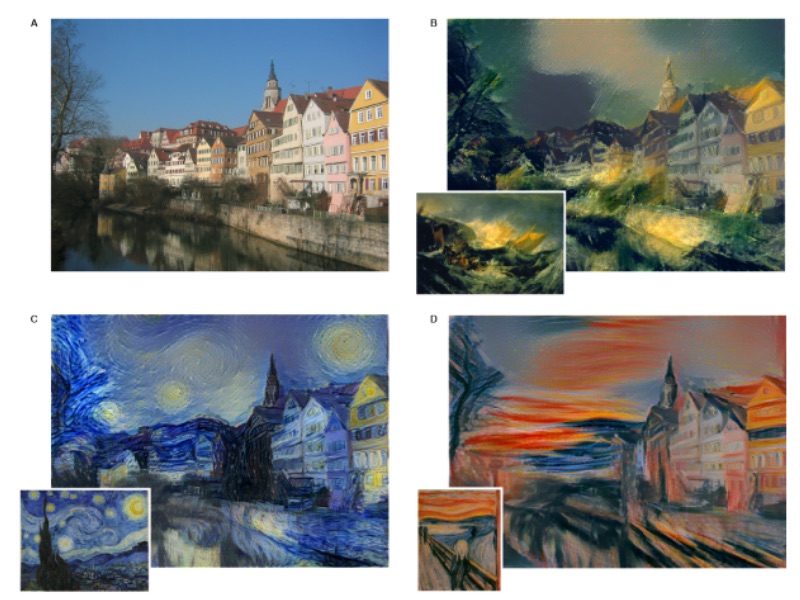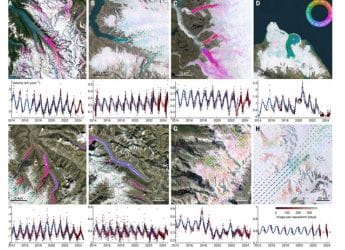- Home
- Cameras
- Cameras News
- Average Joe to Picasso: Algorithm Turns Photos Into Artistic Masterpieces
Average Joe to Picasso: Algorithm Turns Photos Into Artistic Masterpieces

Buying a painting is an expensive affair. The reading on the price tag, moreover, grows exponentially if that piece of art has been made by a great artist like Gerhard Richter, or M.F. Husain. While you can always buy a digital copy for cheap, or use your photoshop skills to create a painting, the technology has largely failed to offer on par experience. That's changing. German researchers have released a paper detailing how a computer algorithm can turn your ordinary images into professional looking paintings.
The researchers have released images that have a canny resemblance with the works of the all-time greatest painters, Vincent Van Gogh, Picasso, and Edvard Munch. These images took just an hour to come to life, the researchers noted. In the days to come, as they further optimise the algorithm, they expect the processing speed to get faster.
The algorithm, which hasn't been released to the public yet, showcases the advancements we have made in the field of deep learning. The field in which computers identify and classify patterns through huge data sets, is designed to mirror the way we humans think and work.
The researchers are able to blend an ordinary image with a painting from an artist using something called convolutional neural networks. "The key finding of this paper is that the representations of content and style in the Convolutional Neural Network are separable. That is, we can manipulate both representations independently to produce new, perceptually meaningful images," wrote (PDF) the authors.
"Here we introduce an artificial system based on a Deep Neural Network that creates artistic images of high perceptual quality. The system uses neural representations to separate and recombine content and style of arbitrary images, providing a neural algorithm for the creation of artistic images. Moreover, in light of the striking similarities between performance-optimised artificial neural networks and biological vision, our work offers a path forward to an algorithmic understanding of how humans create and perceive artistic imagery."
There are some complications, however. The researchers noted that one needs to maintain the right balance between style and content, as more focus on the former would produce an image that wouldn't look similar to the original content. The researchers plan to release another paper on this later this year.
Get your daily dose of tech news, reviews, and insights, in under 80 characters on Gadgets 360 Turbo. Connect with fellow tech lovers on our Forum. Follow us on X, Facebook, WhatsApp, Threads and Google News for instant updates. Catch all the action on our YouTube channel.
Related Stories
- Samsung Galaxy Unpacked 2025
- ChatGPT
- Redmi Note 14 Pro+
- iPhone 16
- Apple Vision Pro
- Oneplus 12
- OnePlus Nord CE 3 Lite 5G
- iPhone 13
- Xiaomi 14 Pro
- Oppo Find N3
- Tecno Spark Go (2023)
- Realme V30
- Best Phones Under 25000
- Samsung Galaxy S24 Series
- Cryptocurrency
- iQoo 12
- Samsung Galaxy S24 Ultra
- Giottus
- Samsung Galaxy Z Flip 5
- Apple 'Scary Fast'
- Housefull 5
- GoPro Hero 12 Black Review
- Invincible Season 2
- JioGlass
- HD Ready TV
- Laptop Under 50000
- Smartwatch Under 10000
- Latest Mobile Phones
- Compare Phones
- Realme P4x 5G
- OnePlus Ace 6T
- Nubia Flip 3
- Nubia Fold
- OPPO A6x 5G
- Samsung Galaxy Z TriFold
- Poco F8 Ultra
- Poco F8 Pro
- Asus ProArt P16
- MacBook Pro 14-inch (M5, 2025)
- Poco Pad M1
- Poco Pad X1
- Just Corseca Skywatch Pro
- Honor Watch X5
- Acerpure Nitro Z Series 100-inch QLED TV
- Samsung 43 Inch LED Ultra HD (4K) Smart TV (UA43UE81AFULXL)
- Asus ROG Ally
- Nintendo Switch Lite
- Haier 1.6 Ton 5 Star Inverter Split AC (HSU19G-MZAID5BN-INV)
- Haier 1.6 Ton 5 Star Inverter Split AC (HSU19G-MZAIM5BN-INV)

















